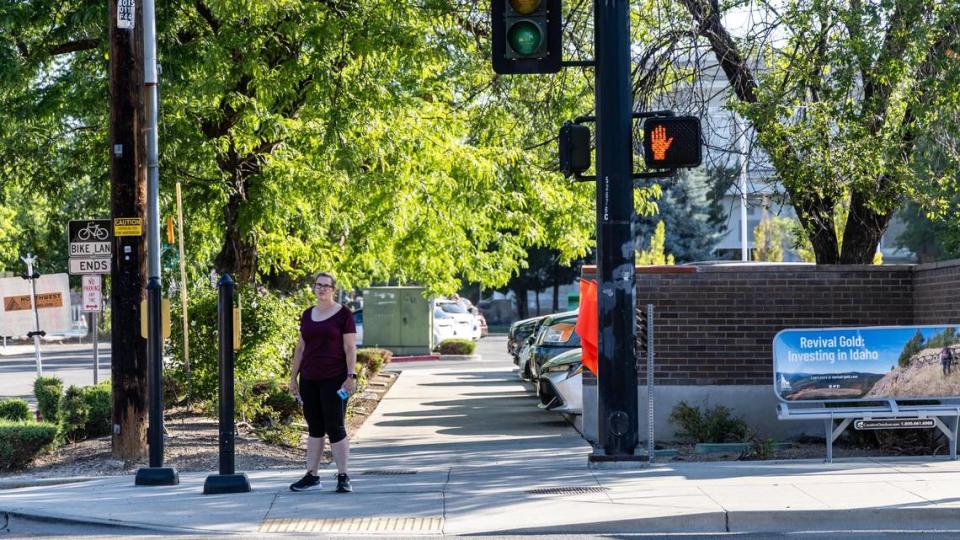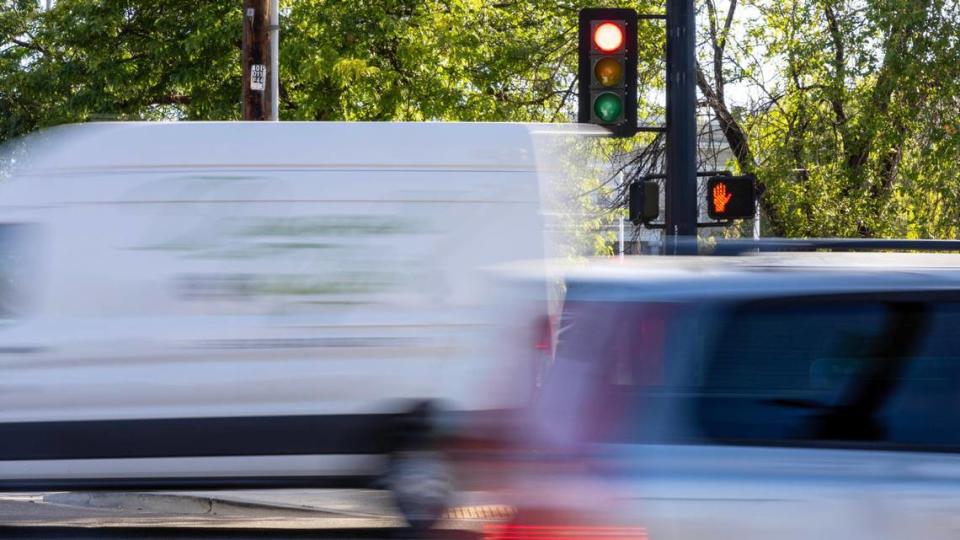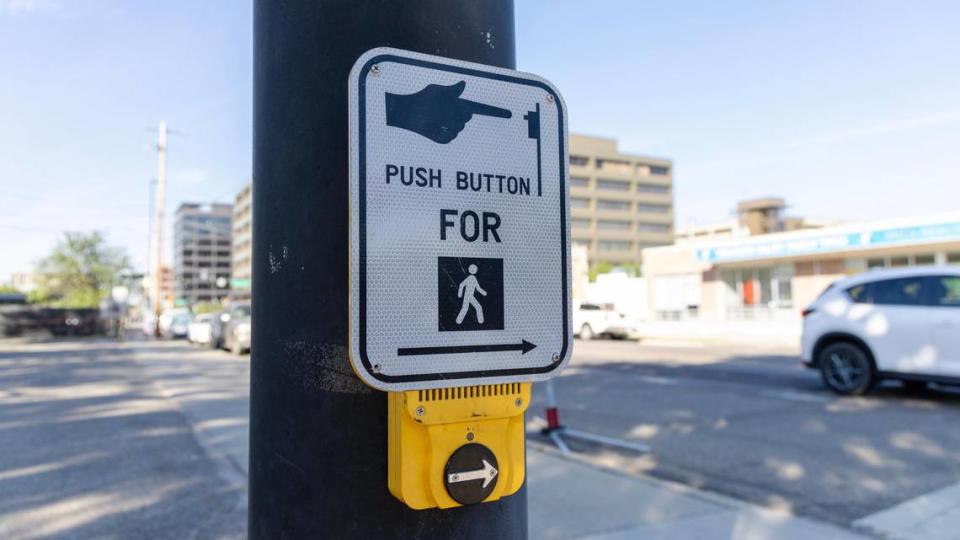Pedestrians get hit at Boise-area intersections. A signal gap of mere seconds could help
A new traffic safety improvement could buy you some time — and protect you from distracted drivers — at street corners across Ada County.
You’ll soon be getting a head start crossing intersections with walk-light timing adjustments planned by the Ada County Highway District. Its traffic engineers are reprogramming pedestrian walk lights to let you start walking several seconds before traffic signals change to green to let vehicles proceed.
The change is intended to make it more likely that drivers making a right or left turn will see you.
The change is new to Ada County, though it has become common across the country in the last decade. The walk lights are being altered in the midst of a spike in cars colliding with people, including at one Boise intersection where drivers have hit four people, killing one, this year. Research shows that the change can reduce the odds of those accidents happening to you.
We tracked down answers to six questions about the changes:

1. How long is the head start?
Engineers program the traffic lights to turn green three to seven seconds after the walk sign turns on for people crossing the street, said Paige Bankhead, an ACHD engineer overseeing the alterations, known to engineers as leading pedestrian intervals, or LPIs. Walk lights turn on at the same time as traffic signals in intersections without the new sequence.
The length of the head start depends upon the length of the crossing, said Ryan Head, ACHD’s deputy director of development and technical services, in the same call with the Idaho Statesman that Bankhead was on. The Federal Highway Administration’s manual for pedestrian signals says the duration of the interval should be long enough to allow pedestrians to cross at least one lane before the light turns green.
2. Why is ACHD doing this now?
The highway district has seen a spike in the number of people being killed by cars this year, Head said.
There were six pedestrian fatalities last year, he said. Already, 16 pedestrians have died this year.
Some of those deaths occur at intersections with signal lights. Among them: Harry Reents, a 79-year-old Boisean, died after being hit by a man driving a truck at the intersection of 11th and State Streets in January.
In a previous interview with the Statesman about that intersection — also the site of three other crashes in which drivers ran into pedestrians — David Duro, president and CEO of the nearby Treasure Valley Family YMCA, said he wasn’t sure what could be causing the rash of accidents there.
Head said there is no one cause to blame for the jump in crashes. The agency makes individual safety improvements based on the characteristics of each intersection.
“LPI is not a panacea that’s going to fix every single crash,” he said. “But we do know that from research, it’s expected to reduce the number of crashes.”
Lily Eleftariadou, director of the University of Florida Transportation Institute, said in a call with the Statesman that it takes years of collecting data to understand a trend in traffic accidents. An increase could be caused by simultaneously increasing volumes of cars and people crossing a road, she said, or a change in land use that causes more people to cross at a time of day when traffic is high.
3. Is this change really effective?
Pedestrian intervals have been shown to reduce the number of collisions between cars and people by as much as 60%, Eleftariadou said.
“It makes sense, because it just reduces that possibility of conflict,” she said. “It gives pedestrians a head start, makes them more visible.”

Authors of a 2008 study sponsored by the agency found that pedestrian intervals installed in New York, Toronto, Charlotte and Chicago reduced both vehicle-pedestrian crashes and vehicle-vehicle crashes by 13%. In a separate 2010 study, scientists documented a 58.7% reduction in cars hitting people.
“What’s important is that the agency looks at the crashes, the specific types of crashes,” she said. “And recommends the appropriate countermeasure.”
4. Where will walk lights be altered?
ACHD plans to program the intervals into all 457 signalized intersections in the highway district, Bankhead said. Just over 50 have already been completed.
5. How long will the changes take?
Programming every intersection will take several years, Bankhead said.
When the agency makes upgrades to an intersection, it must ensure that it meets modern standards under the Americans with Disabilities Act. That includes installing accessible pedestrian signals at each corner, she said: buttons that provide an audible signal and vibrate when it’s time to walk for pedestrians who are blind or deaf.
It will take extra time to implement the intervals at intersections that don’t already have those buttons in place, Bankhead said, so ACHD will prioritize intersections where they already exist.

Some intersections are also part of a coordinated signal network, a string of traffic lines on one road that are timed to move traffic along the corridor without stopping. Engineers must analyze the signals at each intersection to figure out how installing a pedestrian interval at one will affect the others, Bankhead said.
ACHD must also update old equipment in some cabinets that control timing at intersections, Head said.
“Imagine your phone 10 years ago compared to your phone now,” he said. “It could handle different things.”
6. How much will this cost?
Bankhead said ACHD will need more data before estimating cost. Some intersections will require new street ramps, reconstructing corners to install accessible push buttons, or other additional changes, Head said.
The district will use money from its general fund to pay for the project, he said.
At a Boise crosswalk, 4 people hit by cars this year. One died. How officials responded
Pedestrian dies after being hit by vehicle while crossing State Street in Boise
Pedestrian struck, killed by pickup remembered as ‘unparalleled’ family member


